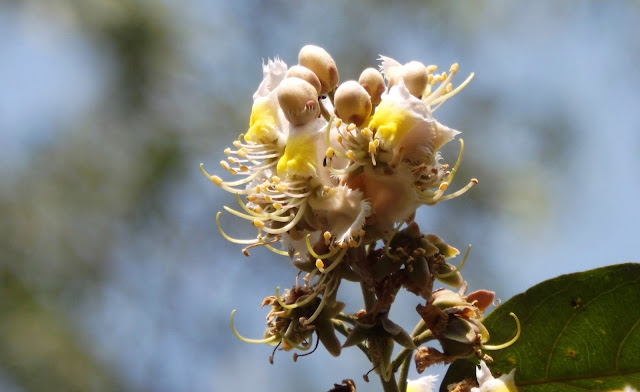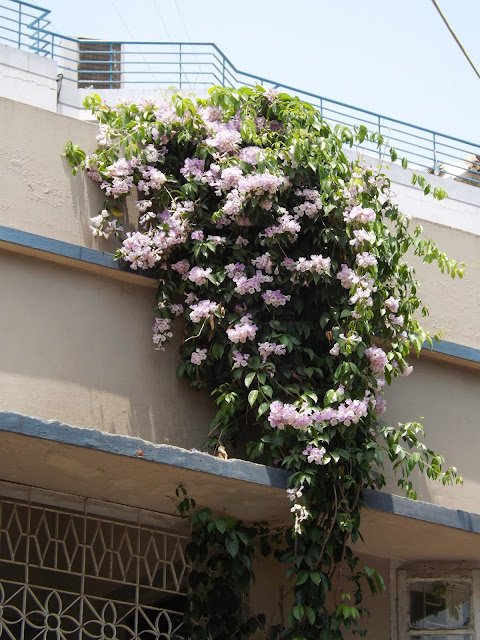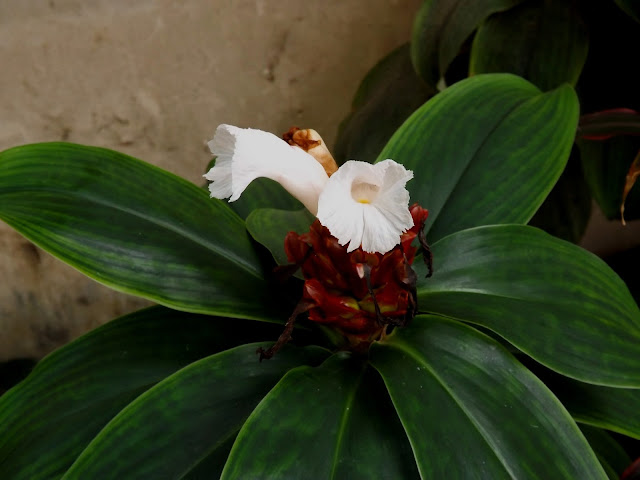Madhobi-lota or Madhabi, Hiptage benghalensis

Madhobi-lota or Madhabi ( Hiptage benghalensis , family: Malpighiaceae) is a large climbing shrub with woody stem and extensive branches. The perennial leafy climber can climb up to 5 m. In Bangla literary works, the vigorous climber is very famous for its sweet-scented flowers. The deciduous climber is found in the hilly areas of Bangladesh. Although it is rare in its original habitat, it has become popular to the gardeners of the country recently. Flower blooms in large bunches in the spring. Blooming period is very shortened, lasts only for 2 weeks. Leaves are glossy green, petioled, elliptic, 10-15 cm long, opposite, leathery. Flowers are strong scented, white to light yellow, 3 cm long, on axillary panicles, silky outside, pale yellow inside. Sepals 5; petals 5, four of them are equal in length and white in color, the rest one is smaller and its color is yellow. Stamens 10, one is bigger. Dry fruits are 3-winged, They fly through these w



